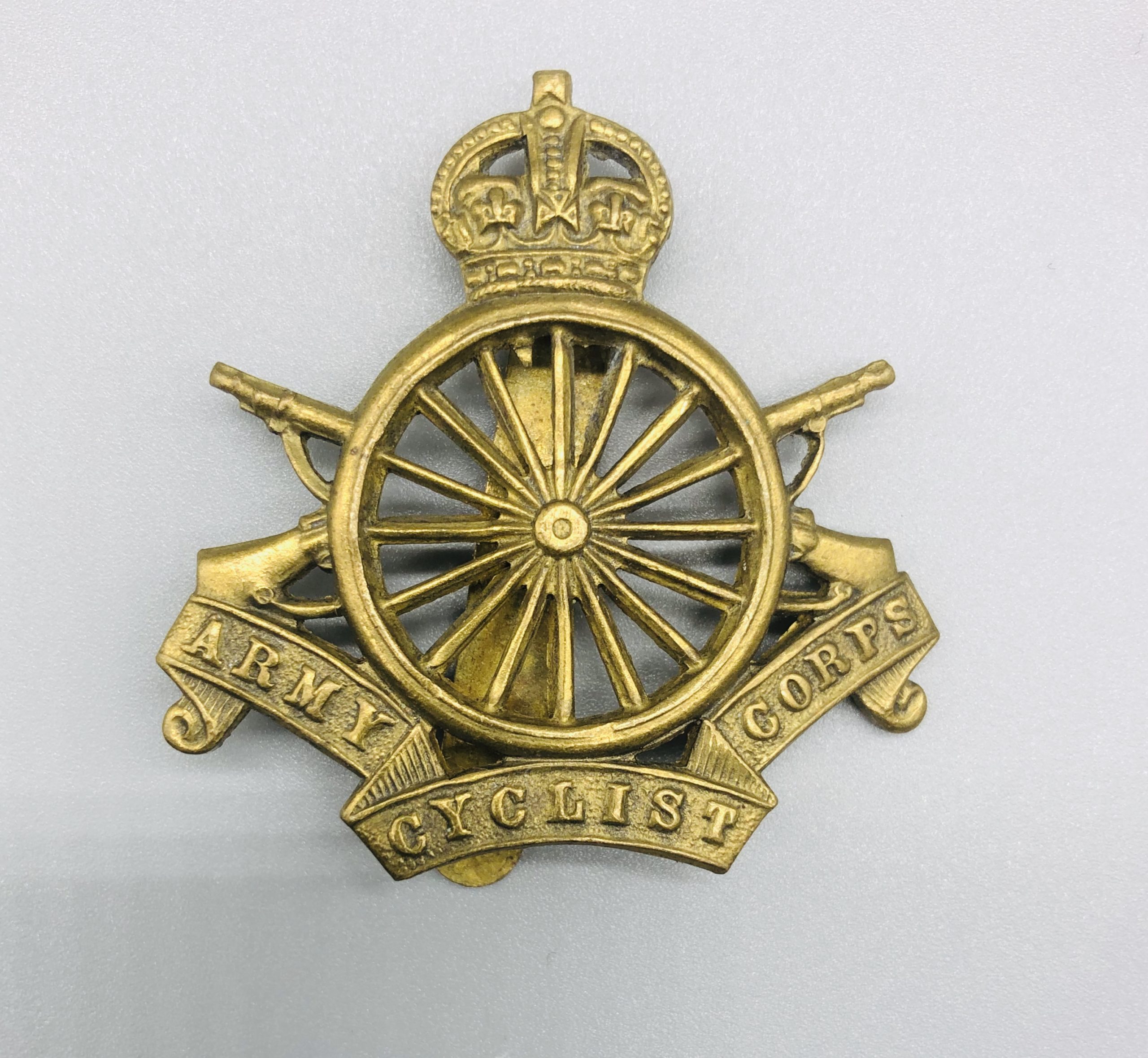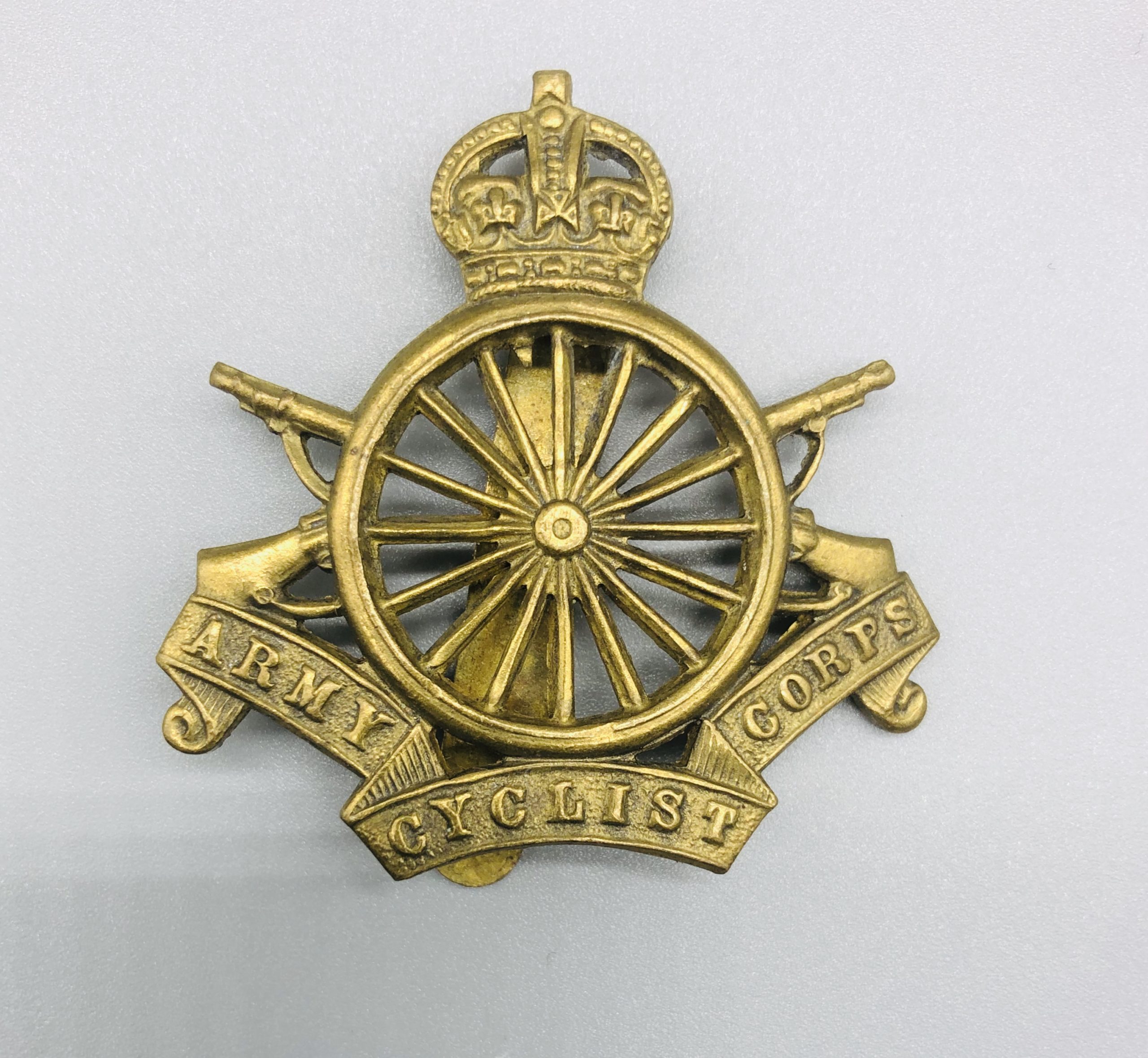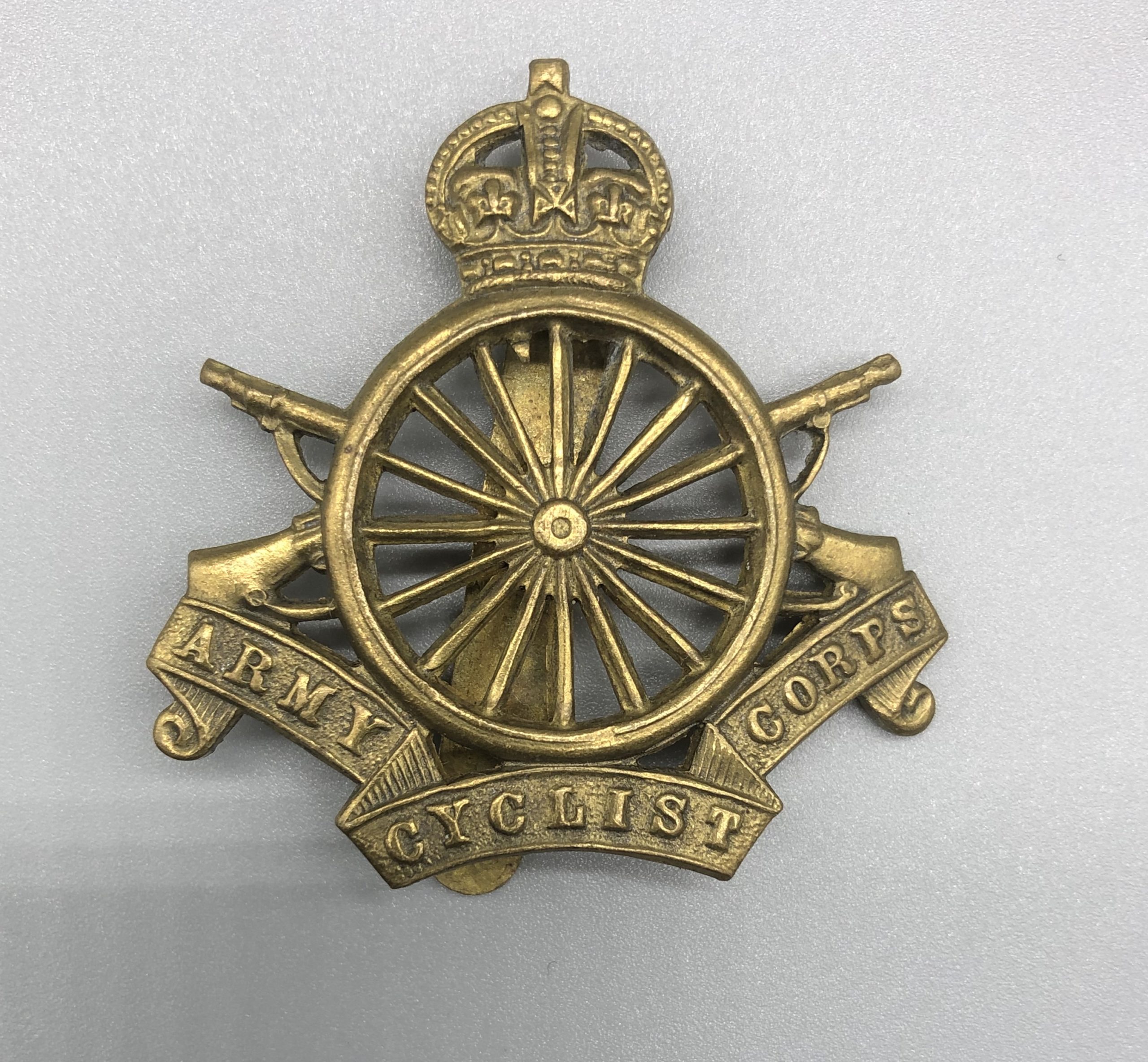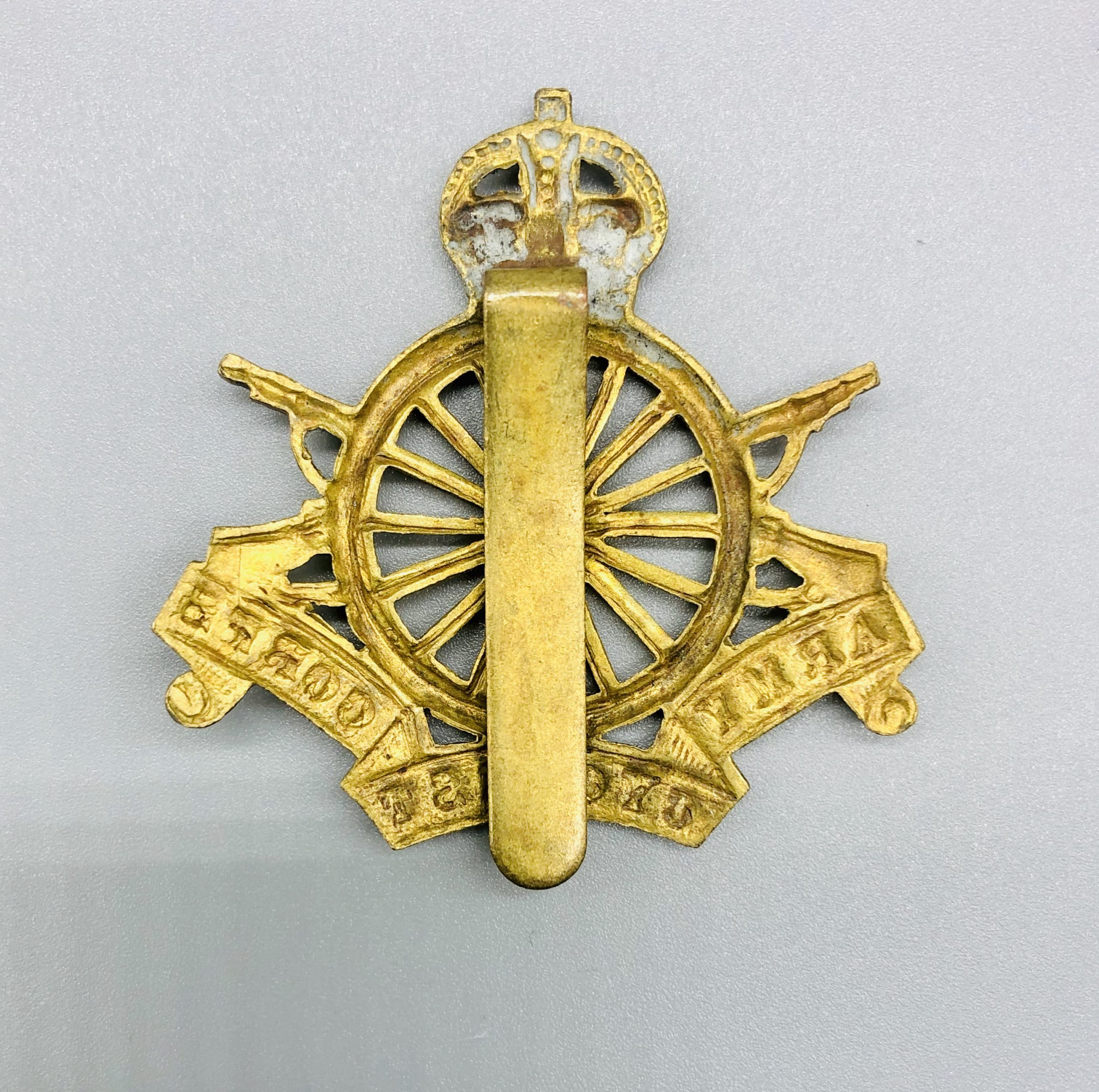Description
Army Cyclist Corps Cap Badge
The Army Cyclist Corps cap badge depicts a bicycle wheel with cross carbines surmounted by imperial crown, below the wheel is a scroll with the inscription “Army Cyclist Corps”.
Brief History
The first form of the bicycle was invented in 1817 in France as an alternative to horses, when crop failure following the volcanic eruption of Tambora, lead to the mass starvation of horses in France. There followed many different versions of this early bicycle, which on the whole was considered a rich man’s toy until 1890, when a new safer version of the bicycle was invented and formed the basis of modern bicycles. During the First World War it was believed that this popular form of transport could be of use in the war effort.
Bicycles were lighter, quieter and logistically easier to manage than horses making them ideal for reconnaissance and communications work and had first been used in this way during the Second Boer War (1899-1902). The Haldane Reforms of 1908 reorganised the Volunteers, Yeomanry and the Militia Regiments into a Territorial Force following the Territorial and Reserve Forces Act 1907.
On the outbreak of the WW1, the cyclist battalions were employed on Coastal Defences in the United Kingdom. Their role was considered to be so important that, initially, none of them were sent overseas. In 1915, the Army Cyclist Corps was founded to encompass these battalions; it later extended to cover a dozen more battalions raised from second-line yeomanry regiments which had been converted to cyclists.
Most units of the Corps served out their time in the United Kingdom, providing replacement drafts to infantry battalions; some were converted back to conventional infantry and saw active service, such as the Kent Cyclists (on the North-West Frontier) or the 2/10th Royal Scots (in northern Russia)
The Corp was disbanded in 1920, by 1922 all remaining Territorial cyclist battalions had been converted back to conventional units.





